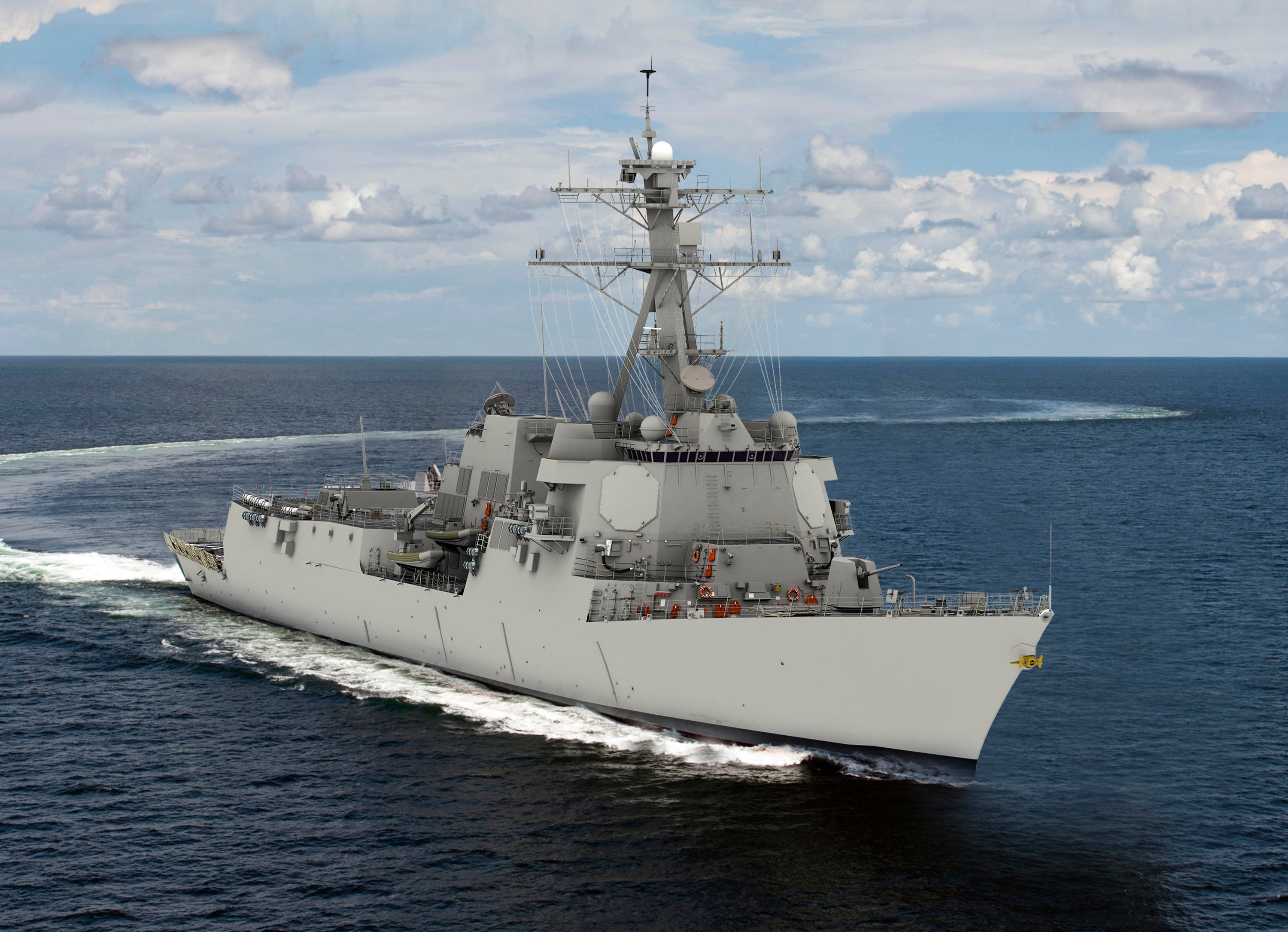
This post has been updated to clarify that a new program office for the large surface combatant has not yet been created. Capt. Casey Moton said the current Arleigh Burke program office has a major role in the development effort until a program office for LSC was stood up.
Arleigh Burke DDG-51 Flight III program is on track, with the first ship under construction and two more under contract. But making the transition from the earlier Arleigh Burke-class destroyers has required a significant number of design changes and challenges, driven mainly by the requirement to install the powerful new Raytheon AN/SPY-6 air and missile defense radar, the program manager said on Thursday.
“The reason for the ship is to field the SPY-6 and the Aegis Baseline 10 for improved capability in missile defense,” Capt. Casey Moton said at a forum sponsored by the American Society of Naval Engineers. The radar is being tested at the Pacific Missile Test Range, just completed its last anti-missile test event and did very well, Moton said.
Moton gave a brief rundown on the overall DDG-51 program, noting that 66 ships have been delivered to the Navy, the 67th could be delivered as soon as Friday, and 22 are under contract with 10 under construction at the two shipyards – Ingalls Shipbuilding and General Dynamics Bath Iron Works.
“It is now our job to deliver the first Flight III. It’s going to be a lot of hard work, but we’re going to do it,” he said.
Moton went into considerable detail on “the significant number of things we had to do in design of Flight III, which are indicative of the kind of challenges you face when you do a modified repeat” rather than a new design.
Most of the modifications were “enabling changes” to get SPY-6 to work and to fit on the ship in association with the Aegis baseline 10, he said.
Although the upgraded Aegis Combat System is mainly a software change, the SPY-6 requires larger electronically scanned arrays, which, along with the more powerful components, added about 400 tons in weight and greater volume to the ship. That required increased space and structural enhancements in the deckhouse and strengthening of the hull “to take the added weight and volume,” Moton said.
To provide the massive amount of cooling need for the powerful radar, engineers found ways to increase the air conditioning capacity from five 200-ton plants to five 300-ton machines “in the same footprint.”
“If the designers had not figured out how to do that, we would not have gotten that radar on the ship,” Moton said.
The Flight IIIs also have multiple other changes and enhancements, including a shift from the old halon gas fire extinguishers in engine spaces to a water mist system that required developing new nozzles and adding a booster pump and pulsation dampener and finding space for the large tanks to hold the purified water for the system.
Although it does not fall within his office, Moton said he has “had a fairly major role” in early stages of developing the future large surface combatant (LSC) that are meant to replace the current Ticonderoga-class cruisers. He said last week the Navy released two requests for information, one aimed at shipbuilders and designers and one directed toward systems designers and producers.
He said the first construction contracts for the LSC could come as early as Fiscal Year 2023, or could be delayed until 2029.
In his brief on the overall DDG-51 program, Moton noted the five-year break in Arleigh Burke production while the Navy was focused on the DDG-1000 program that was expected to replace the Burkes but was terminated at three ships due to the high costs.
In response to a question from USNI News, he said that production interruption had significant negative effect on the restarted DDG-51 program, citing the loss of experienced workers and supervisors; disruption of the supply chain, including the need to restart production of the main reduction gears; and increased the cost of the follow-on ships by “hundreds of millions of dollars.”




